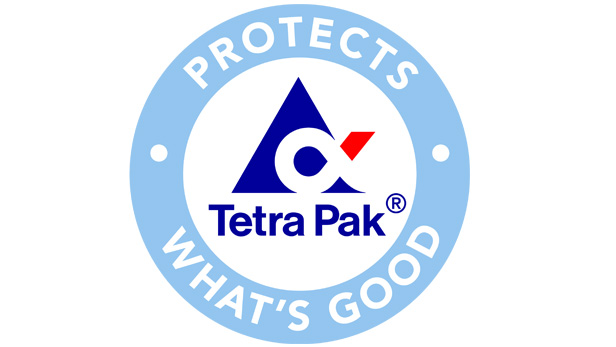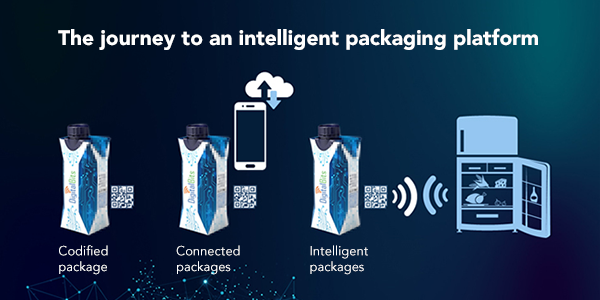Promotional Features
Tetra Pak: The future of packaging is undoubtedly digital
Food and beverage manufacturers and brand owners face a wide range of future challenges, from the pressure to ensure traceability of their products, through to the need to identify better ways to engage with consumers.
The positive for companies wrestling with such challenges is that the digitalisation of packaging can address many of their current pain points. Recognising that, Tetra Pak has created the Connected Package platform to enable manufacturers to give their products a digital life.
Tetra Pak Connected Package platform is designed to help an industry that faces pressures on multiple fronts. Consumers want safe, healthy food that is made from responsibly-sourced materials and where possible shipped in recyclable, environmentally-friendly packaging. That diverse set of demands is pushing manufacturers to transform multiple aspects of their operations simultaneously.
Food and beverage manufacturers need to make their operations more energy efficient and strive to achieve the lowest possible carbon footprint. To complicate matters, companies need to implement these major changes while revising oversight of the value chain to ensure they know where all their products are all the time and can respond quickly to quality concerns.
The modern, connected consumer is particularly sensitive to quality failings, as well as the state of food and beverage supply chains more generally, and bad publicity can fuel lasting changes in their buying habits.1,2 That sensitivity is reflected in the way that shifts in consumer attitudes have quickly turned supply chain transparency from an option to a requirement.
Today, almost all consumers think transparency is important and are willing to pay a premium for transparent solutions.3 Around three-quarters of consumers are more likely to switch to a brand that provides in-depth product information that goes beyond what is found on the physical label.4 Even more people see value in being able to use smartphones to get extra information while in a store.
Consumer prioritisation of transparency provides manufacturers with one way to increase loyalty to their brands. The demand for relevant experiences, real-time interaction and personalised content offer other ways.
Going digital to address challenges
Digital, packaging-centred solutions can address all these challenges and opportunities. By adding a unique code to each product, manufacturers turn their packaging into an information and interaction channel capable of supporting everything from quality oversight to consumer engagement.
On the quality front, the scanning of packaging codes facilitates the traceability of packs throughout the full value chain. Equipped with such a comprehensive overview, manufacturers can quickly rectify food safety and quality issues, stop undated or incorrectly-dated packs leaving their facilities and take other actions that reduce operational costs, improve efficiency and enable growth.
End-to-end traceability also help manufacturers meet consumer demands for transparency, particularly if they are deployed in conjunction with product authenticity options. The authenticity option, which enables customers to confirm the provenance of a product, is one of a range of consumer-focused applications unlocked by the scanning of connected packaging.
Manufacturers can also use packaging codes to provide consumers with easy access to information, engage in a dialogue with the public and learn more about their customers. These applications empower manufacturers to address consumer trends, create shareable experiences and build trust.
The data generated by both the consumer and operational applications of connected packaging can be analysed to generate insights. This enables manufacturers to use real-time engagement data to fine tune their marketing campaigns and make data-driven business decisions, leading to increased sales and more efficient, productive operations.
How Tetra Pak streamlined digitalisation
The diversity of benefits unlocked by digital packaging offers manufacturers a way to address many challenges. However, the complexity of digitalisation means it is impossible for individual companies to realise these benefits without assistance.
Tetra Pak responded to this barrier by creating an integrated offer designed to spare companies from the need to navigate the fragmented and complex digital landscape. The offer is built on Tetra Pak® Connected Package platform, a combination of hardware and software featuring all of the technical infrastructure needed to implement digital solutions.
The Connected Package platform supports the generation, printing and reading of codes, has strong cybersecurity features, has been fully validated around the world and integrates with all aspects of food and beverage production. By pairing these and other industry-specific features with a global, scalable infrastructure, Tetra Pak has created a platform capable of quickly and simply supporting digitalisation programs anywhere, at any scale.
Tetra Pak uses these capabilities of the Connected Package platform to offer bundles of solutions tailored to the needs of food and beverage manufacturers. The solutions fall into two broad categories. One category covers Consumer Engagement solutions and features all the capabilities companies need to connect with the public and drive brand loyalty.
The other category covers Track & Trace. Subscribers to this bundle gain the ability to track products through the whole value chain, enabling them to improve production, quality control and supply chain transparency while monitoring for market performance and any potential issues.
In both cases, the Connected Package platform underpins the solutions, enabling customers to leverage Tetra Pak’s digital infrastructure by subscribing to bundles tailored to their specific digital needs.
Food and beverage manufacturers are working with Tetra Pak to realise the benefits of digitalisation today, leading to case studies demonstrating the value of connected packaging. One customer, a European dairy producer, saw product sales increase by 16% and a decline in claims after rolling out a digital packaging code that consumers scanned 325,000 times.
The future of packaging
Manufacturers that follow the lead of the pioneering dairy company stand to address many of their current challenges while improving productivity. Going digital today, particularly with the support of the future-ready Tetra Pak Connected Package, will also position manufacturers to move quickly as packaging technology advances to the point that products communicate with smart appliances.
The future of packaging is digital. Now is the time to embrace the technology.
References
1. Maria Aguiar Fontes, Eric Giraud-Héraud, Alexandra Seabra Pinto. Consumers’ behaviour towards food safety: A literature review. HAL
2. Horsemeat Scandal Study. Ipsos Available at: https://www.ipsos.com/sites/default/files/migrations/en-uk/files/Assets/Docs/Polls/marketquest-horsemeat-topline-2014.pdf (Accessed: 28th May 2019)
3. 2017 Transparency Study - Response Media. Response Media (2017). Available at: http://www.responsemedia.com/2017-transparency-study/ (Accessed: 28th May 2019)
4. Product: The Transparency Imperative: Product Labeling from the Consumer Perspective: FMI. Available at: https://www.fmi.org/forms/store/ProductFormPublic/the-transparency-imperative-product-labeling-from-the-consumer-perspective (Accessed: 28th May 2019)


